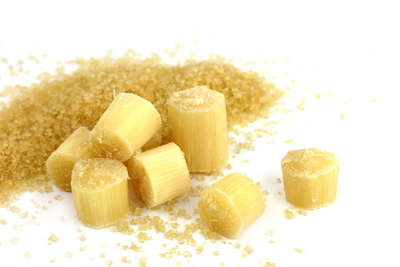Multiple market factors from falling oil prices, demand fears and tariffs have undercut the pricing of global sugar up to mid-April 2025.
Early on the 14th, unrefined sugar in New York shed -0.88% day-on-day while white sugar in London eased -0.53%.
By the morning of April 15, most trade was below $0.18 a pound, continuing a streak that began on April 3.
Beforehand, the sweetener had made a brief comeback at $0.19 and then peaked at $0.20 a pound in mid-March. However, it all along kept shy of the February 21 high of $0.21 a pound.
Ethanol and Oil
Two factors driving this onslaught are related and include low crude oil rates that have in turn cheapened ethanol.
This is a close reprise of a similar scenario in early March 2025 when crude’s fall to $67.66 a barrel had pressured sugar.
Whenever this scenario occurs, ethanol mills relax cane utility and shift production to sugar, which pinches the price.
Production, Demand, Tariffs
In reality, the world’s sugar production faces a deficit of -4.88 million tonnes, according to the International Sugar Organization (ISO).
What makes production seem momentarily high is concern that oil-related ethanol processing cuts might force more sugar output, a bearish factor.
On top of it all is the ongoing tariff fallout, which is fanning worries about possible low consumer demand.
China had by mid-April raised its duty on American goods to 125% to match the 145% by the United States.
This is worrying traders on low demand probability if consumers give up buying the sweetener from eventual tariff impact.
Technical factors such as tariffs and oil are therefore what is truly causing a current downturn in global sugar pricing. More information relating to the topic are gleanable in the following statistics that narrow down to sugar tariffs.
Statistics on How Tariffs Affect Sugar Pricing: Example
Tariffs on sugar have been a major issue of concern for over a century because they sometimes artificially inflate prices. A good example comes from the United States, which has historically either imposed significant duty or controlled foreign sugar volumes. Here is one example of how this impacted price, per a University of Vermont’s study.
Case study Cuba: as a longterm source of the bulk of U.S.’ imported sugar, Cuba got a blow in 1922 when duty increased by 75%. This meant the application of ¢1.7648 per pound of sugar from the country. Still, this tax was lower than that on other countries.
Impact: given that Cuba had increased its production capacity by 27% before the tariff, prices fell at home due to surplus. This is because sales to the United States were now no longer profitable.
Solution: to raise the price, a quota system came up at a low duty. Cuba and other countries could now export restricted sugar volumes of up to 6.32 million tonnes. This was almost equal to American sugar consumption in 1932. For one, Cuba and the Philippines could jointly supply 75% of all imports. Cuba viewed this assignment of just 1.7 million tonnes as not enough and resisted the quota. At the end, the Caribbean nation and the Philippines got 1.944 and 1.037 million tonnes, respectively. From then on, the tariff and quota kept changing and prices moved with the changes, accordingly.
